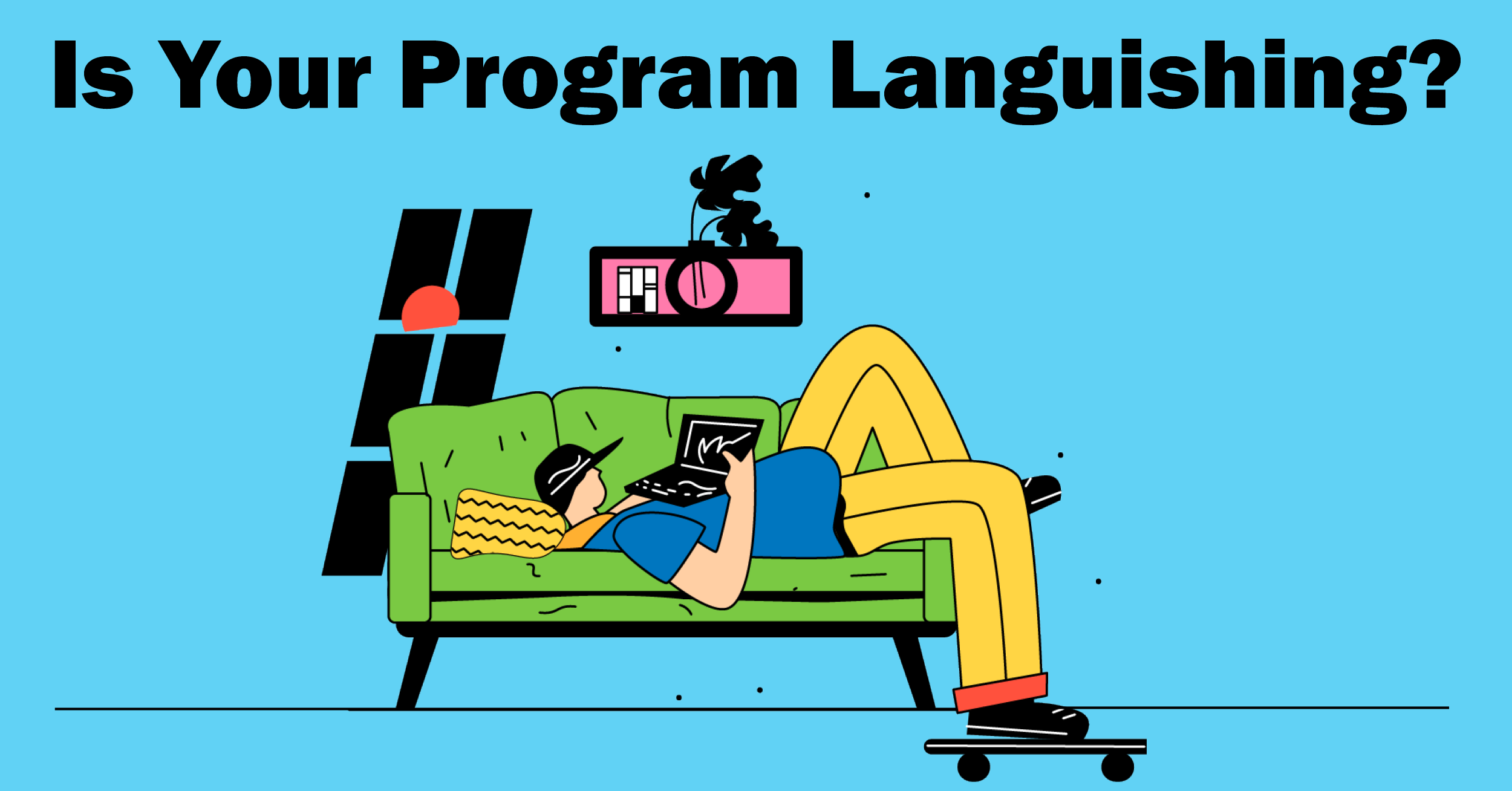
By Anna Batchelder, CEO of Bon Education
We’ve all heard the standard business advice, that even if you create the world’s greatest product, if you underinvest in marketing, cultivating satisfied customers, nailing your pricing strategy, etc., your product is likely to fail or - perhaps worse - languish (a word that seems to be trending these days!).
In a recent article, organizational psychologist Adam Grant uses the word "languish" to describe how many people feel a year into the pandemic. People aside, his definition can certainly apply to products puttering along without much gusto as well:
"Languishing is a sense of stagnation and emptiness. It feels as if you’re muddling through your days, looking at your life through a foggy windshield. And it might be the dominant emotion of 2021."

He goes on to write:
"In psychology, we think about mental health on a spectrum from depression to flourishing. Flourishing is the peak of well-being: You have a strong sense of meaning, mastery and mattering to others. Depression is the valley of ill-being: You feel despondent, drained and worthless. Languishing is the neglected middle child of mental health."
This begs the question: How do you get your team’s product to go from a just-puttering-along state to flourishing?
In my line of work (learning design), the “product” tends to be a learning program (anything from workforce readiness, to youth STEM engagement, to employee learning). So, to rephrase the aforementioned question for my line of work, I would ask: How do you get your organization’s program to go from being mediocre to totally awesome?
When I think back over my last 20 years of working on, supporting or studying programs around the world, here are a few thoughts on how to create a flourishing learning program or how to breathe life into a learning program that isn’t living up to its full potential within your organization:
- Content alone does not make a program! I can’t tell you the number of initiatives that I’ve seen fall flat - not because the learning content wasn’t great, but because that content had nothing around it to support usage and adoption. I’ve spoken with a number of HR leads that say, “We bought a subscription to XYZ course repository, yet most people aren’t taking advantage of it!” Take time up front to create a program strategy that includes not only a plan for creating and rolling out content, but also a plan for participant recruitment (content users), ongoing participant engagement (with value-added incentives), program evaluation and ongoing kaizen. In every program that we create (examples here), program strategy, content, operations and reporting work hand in hand to achieve our clients’ desired goals. Content alone does not make a program!
- Assign two or more people who are ultimately responsible for the success of the program. Many large corporations outsource elements of their learning and engagement programs. This allows them to bring in experts and specialists without having to add full-time staff internally (which is a good thing). Regardless, to achieve maximum success, programs need internal advocates to 1) make key decisions and communicate to external consultants/service providers the reality on the ground within the organization, and 2) to serve as evangelists and promoters of the program within the organization to bring people on board and stay on board. I suggest two people because if one of them leaves the company, then the program doesn’t, in turn, fall apart.
- Have monthly meetings devoted to the question, “How do we make this program truly useful and delightful? How do we make this program stand out?” Great programs (like great gardens) need ongoing tending, nourishing and planting of new seeds. Take time out to observe what is happening in your program, what wants to happen and to research, brainstorm and act on ideas that would take your existing program and turn it into something great. Programs must continually evolve to stay fresh. Seek inspiration for your program from expected and unexpected places. Attend other programs regularly, go to museums and sporting events, read fictional books, watch reality TV shows, talk to people in dramatically different industries to get ideas or nuggets of wisdom that can be borrowed and adapted to your own setting. This sounds like common sense, but it takes discipline to make these monthly meetings happen and to take regular time out for “inspiration expeditions.” Don’t let habits and schedules get in the way!
- Focus on the relationships between program participants. My experience is that great programs often become a part of their participants’ identities (examples of this include university alumni groups, AA and Teach for All). This usually happens when participants form strong bonds among one another through shared challenges and emotional experiences. Make sure to allocate time in your program for participant relationship building. This is especially important for online programs, where relationship-building experiences have to be intentionally crafted. To get ideas on how to support relationship building among your staff and program participants, I welcome you to join interstory - our professional network for people that lead programs and social impact work. We regularly host virtual events in a variety of formats that support relationship building.
Creating a learning program that people love takes time. As they say, “Rome wasn’t built in a day!” Ongoing reflection, continual inspiration, step-by-step improvements and relationships, relationships, relationships is the name of the game when it comes to creating programs that flourish!
Wishing you a flourishing program season ahead!
Anna
Anna Batchelder is CEO of Bon Education and Co-Founder of interstory. She has designed and led programs for clients across the Middle East, Asia and North America. Outside of work, Anna is an avid yogi, traveler and podcast lover. Anna resides in the UAE with her husband and three children.


